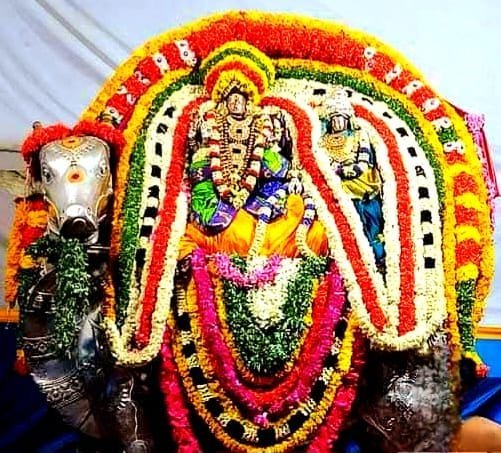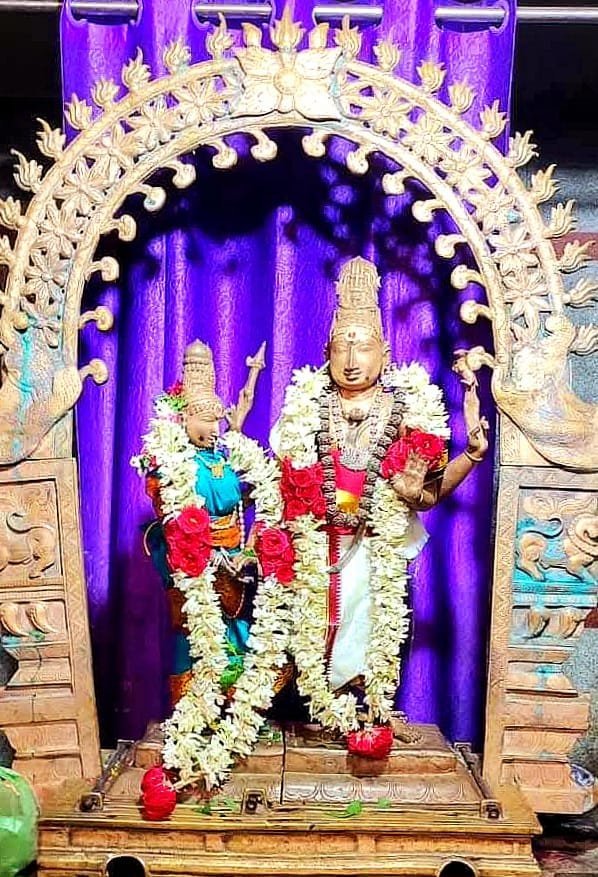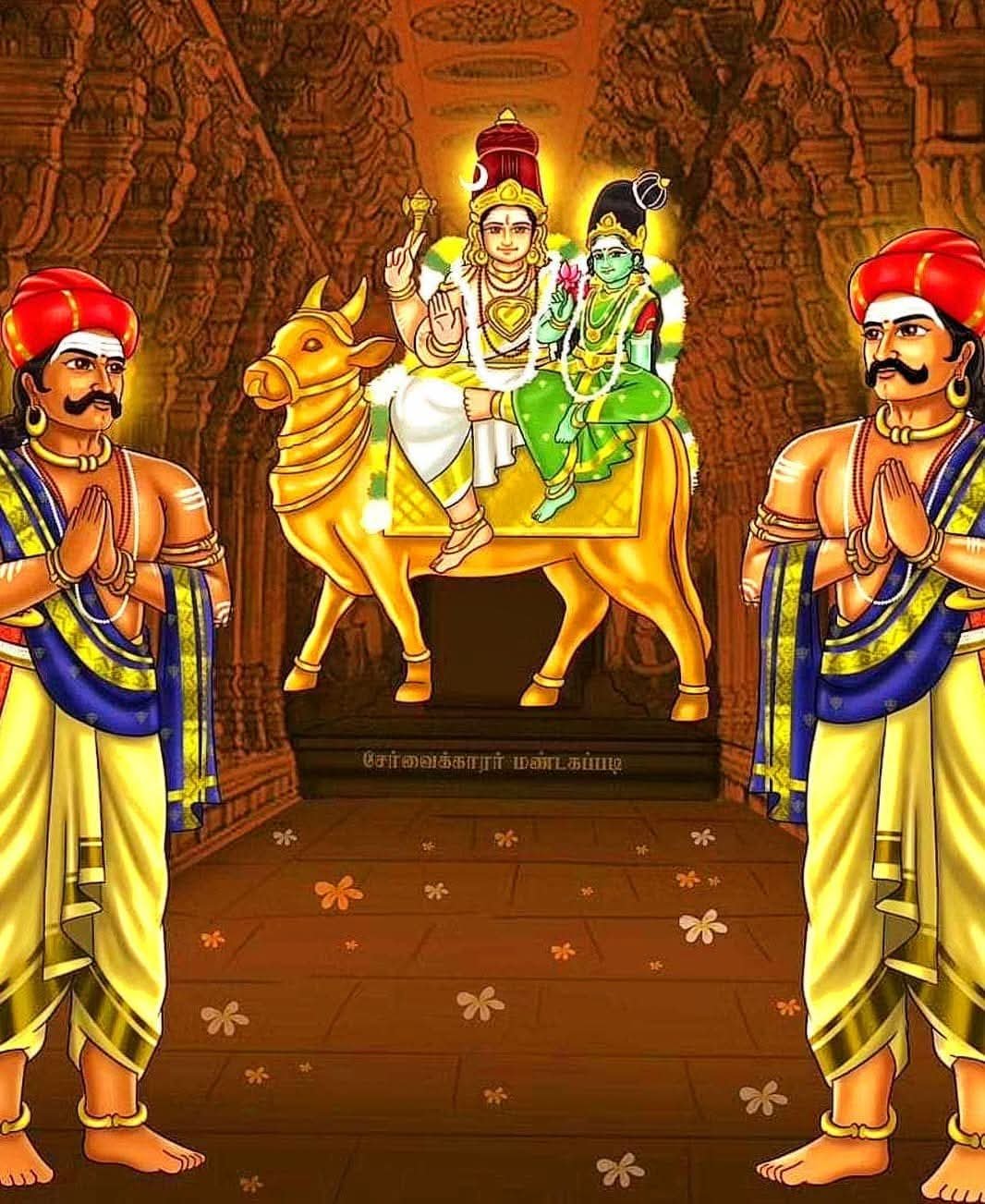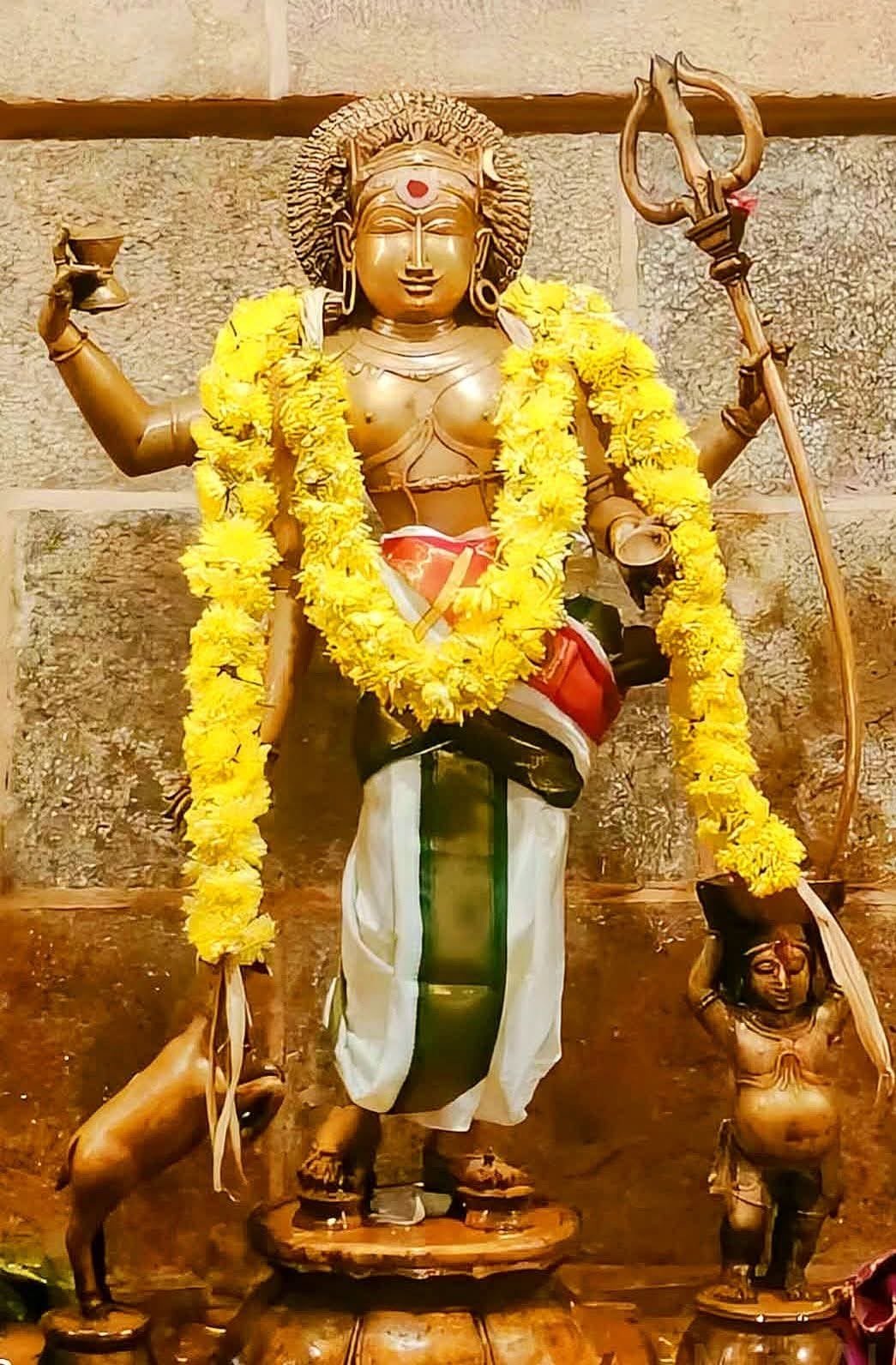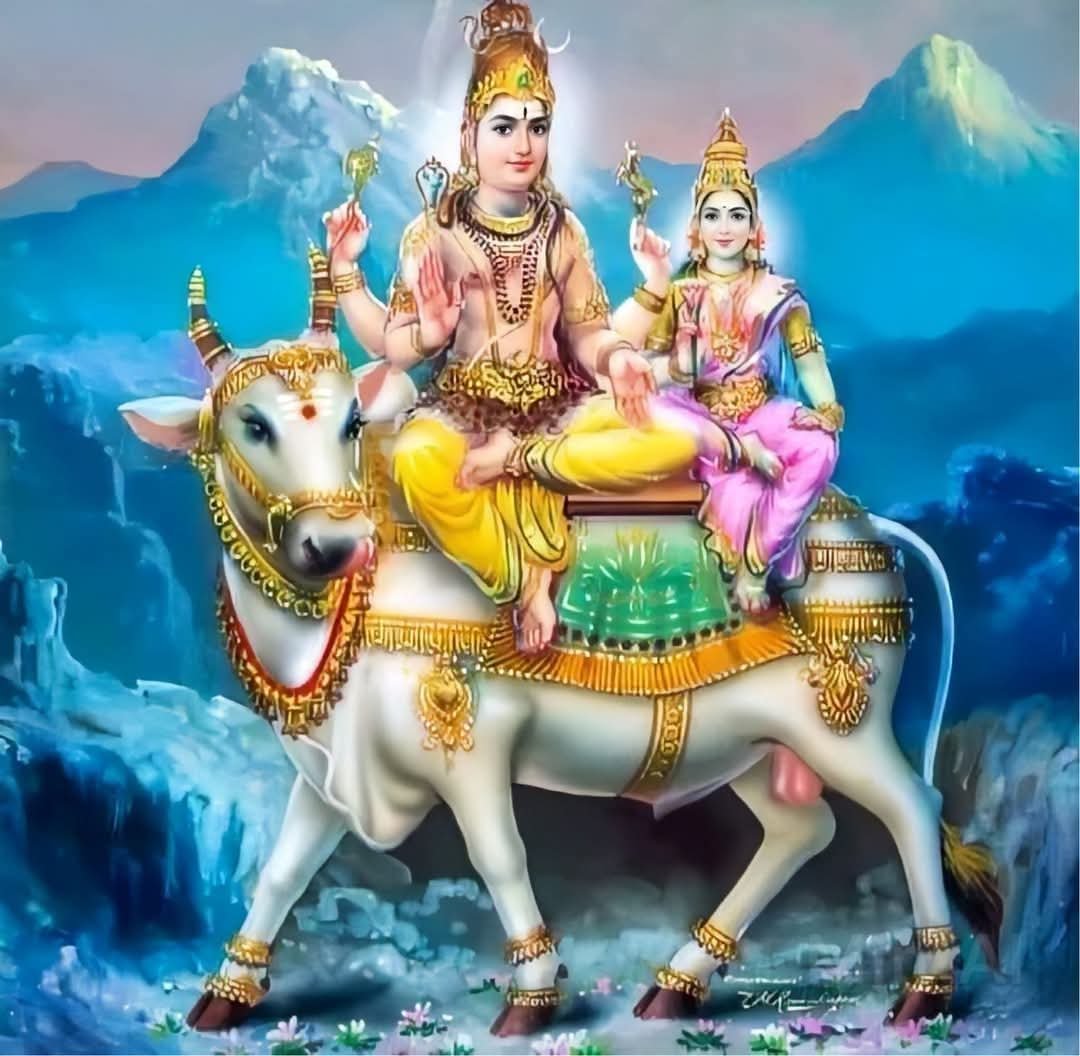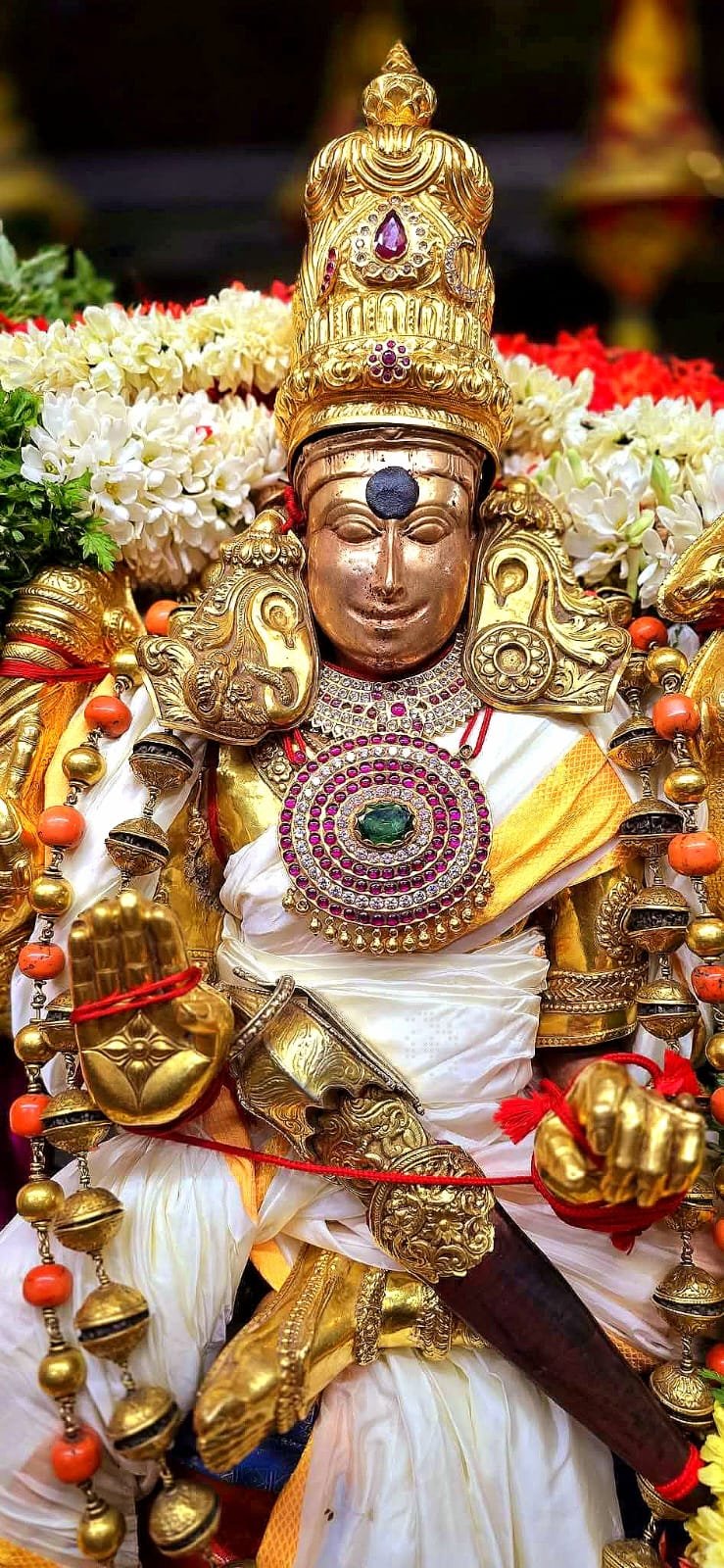உ
சிவமயம்
ஸ்ரீ வேதாகமோக்த சித்தாந்த சைவப் பிரகாச சமாசீய விக்கியாபனம் (விண்ணப்பம்)
நாங்கள் முயலும் இச்சிவபுண்ணியம் அவசிய கர்த்தவ்வியமாகிய லோக உபகாரமாதலானும், செய்தல் செய்வித்தல் உடன்படல் என்னும் மூன்றும் ஒக்குமாதலானும், நீங்கள் யாவரும் இப்புண்ணியம் சபலமாகும் பொருட்டு, உபகாரகர்களாய் இருத்தல் வேண்டும். நீங்கள் உபகரிக்குவிதம் கூறுதும் :
*1. நீங்கள் எல்லோரும், தினந்தோறும், சந்தியாவந்தனம் சிவபூசை சிவதரிசனம் முதலியன செய்யும் பொழுதெல்லாம், வேண்டுவார் வேண்டியதை ஈயும் பரம காருண்ணிய சாகரமாகிய பரசிவனை, அழலிடைப்பட்ட மெழுகுபோல மனங்கசித்துருக, உரோமஞ் சிலிர்ப்ப, கண்ணீர் சொரிய, அன்பினோடு சிந்தித்துத் துதித்து வணங்கி, மற்ற மதங்களை நிராகரித்துச் சைவசமய ஸ்தாபனம் பண்ணுதலாகிய இச்சிவபுண்ணியம் நிர்விக்கின மாய் நிறைவேறும் பொருட்டு அருள் செய்யுமென்று பிரார்த்தித்தல் வேண்டும்.
*2. இச்சிவபுண்ணியஞ் செய்தற்குச் செல்வப் பொருளும் இன்றியமையாக் கருவியாய் இருத்தலால், நீங்கள் எல்லாரும் சிறிதாயினும் உலோபமின்றி, உங்கள் உங்களால் இயலும் பொருளுதவி காலந்தோறும் செய்திடல் வேண்டும்.
*3. அப்பொருள் கொண்டு நாங்கள் அச்சிற்பதிப்பிக்கும் புத்தகங்களை, நீங்ககொல்லாரும் வாங்கி, சித்த சமாதானத் துடனே பலமுறை வாசித்துணர்தல் வேண்டும்.
*4. நீங்கள் வாசித்தவற்றைப் பிறருந் தெள்ளிதின் அறியும்படி உணர்த்தி, நமது சமயிகள் பிறமதப் படுகுழியில் விழாது ஒழியும்படி, சாவதானமாகக் காத்துக் கொள்ளல் வேண்டும்.
*5. பிறமதப் பிரசாரகர்கள் ஆயினும் அவர்களைச் சேவிக்கும் பரிசனங்களாயினும் சைவசமய தூஷணஞ்செய்து பிறமதத்தைச் சாதிக்கவந்தால் அவர்களைப் பிரீதிப் படுத்தல் வேண்டுமென்னுங் கருத்துச் சிறிதுமின்றி, எதிர்ந்து நின்று, சைவத்தின்மேல் அவர்கள் ஏற்றுந்தூஷணங்களைப் பரிகரித்து, அவர்களுடைய மதத்தைக் கண்டித்து, அவர்கள் வாயை அடக்கிவிடல் வேண்டும்.
*6. நீங்கள் எல்லோரும் உங்களுங்கள் பிள்ளைகளை, பரசமயிகளோடு பரிசயம் பண்ணவிடாமல், தகுந்த பருவத்திலே சிவதீக்ஷை பெறுவித்து, அவரவர் பக்குவத்துக்கு ஏற்ப, சைவ நூல்களை தகுந்த ஆசிரியரைக் கொண்டு, ஐயந்திரிபறக் கற்பித்துச் சைவாசாரங்களை அநுஷ்டிப்பித்தல் வேண்டும்.
*7. நிகண்டு இலக்கணம் தருக்கம் முதலிய கருவிநூல்களிலும் திருவள்ளுவர் குறள் முதலிய நீதி நூல்களிலும் வல்லவர்களாய், பாவங்களை வெறுத்துப் புண்ணியங்களையே செய்பவர்களாய், சிவதீக்ஷை பெற்றவர்களாய், தேவாரம் திருவாசகம் திருவிசைப்பா திருப்பல்லாண்டு பெரிய புராணம் என்னும் அருட்பாவைந் தையும் அத்தியயனம் பண்ணினவர்களாய், சரியை கிரியை யோகம் ஞானம் என்ற நான்கு பாதத்தையும், பிரதிபாதிக்கும் ஒரு தந்திரத்தையா யினும் முற்றக் கற்றவர்களாய், திராவிட சித்தாந்தம் பதினான்கையும் உணர்ந்தவர்களாய், குருலிங்க சங்கமபத்தி விசிஷ்டர்களாய் இருக்கும் புருஷர்களைத் தெரிந்து, சைவப் பிரசாரகர்களாக நியோகித்து, ஊர்தோறும் தேவாலயம் மடம் முதலிய பரிசுத்த ஸ்தானங்களிலே சர்வஜன உபகாரமாக வாரந்தோறும் சைவசமயப் பிரசாரம் செய்வித்தல் வேண்டும். (அத்தியயனம் = பாராயணம், நியோகித்தல் = நியமித்தல்)
இவ்வெழு வகையாலும் நீங்கள் எல்லாரும் இந்நன் முயற்சிக்கும் உபகாரர்களாய் இருப்பீர்களாகில், நமது தமிழ் நாடெங்கும் புறச்சமயமாகிய இருள் கெடச் சைவசமயமாகிய பேரொளி தழைத்தினிதோங்கும்; ஓங்கில், அநேகர் பிறந்து இறந்து உழலும் பசுக்களாகிய பிறரைப் பொருளென மதியாது, பரமபதியாகிய சிவபெருமானது மகிமையை உணர்ந்து, அவரே பரம் பொருளெனத் துணிந்து அவரையே மெய்யன்பினோடு விதிப்படி வழிபட்டு, நித்தியானந்த முத்தியை அடைவார்கள்.
இங்ஙனம் அநேகர் முத்தி பெற்று உய்தற்கு ஏதுவாய் இருத்தலால், இச்சிவபுண்ணியமே எல்லாப் புண்ணியங்களினுஞ் சிறந்தது.
- நமக்கெல்லாம் இறக்கும் பொழுது துணையாய் உடன் வருவது இச்சிவபுண்ணியமே ஆதலாலும், நமது தேகம் இக்கணம் இருக்கும் இக்கணம் நீங்கும் என அறிதல் கூடாமையானும், நாம் அனைவரும் சிறிதும் தாழ்த்தாமல், நமக்கு எக்காலத்தும் உற்ற உறவாகிய சிவபெருமானது திருவருளையே முன்னிட்டுக்கொண்டு இவ்வருமருந்தன்ன பெரும்புண்ணியத்தை விரைவிலே முயன்று நடத்தக்கடவோம்.
சைவதூஷண பரிகார நூலிலிருந்து. யாழ்ப்பாணம்-பிரமாதீச வருடம்-தைப்பூசம்-(1854) வெளியீடு.
शुद्धाद्वैत_शैवसिद्धांत
शिवमयम् श्री वेदकामोक्ता सिद्धांत शैव प्रकाश समासीय विज्ञापनम् (अनुप्रयोग) – श्रीलाश्री अरुमुग नवलर। यह शिव पुण्य जिसे हम प्राप्त करने का प्रयास कर रहे हैं, वह संसार का कल्याण करने का आवश्यक कर्तव्य है, तथा करना, किया जाना और सहमत होना तीनों बातें एक ही हैं। इस पुण्य को सफल बनाने के लिए आप सभी को उपकारक बनना चाहिए। आप उपकारक कैसे बन सकते हैं, यह इस प्रकार है:
*1. प्रतिदिन, जब भी आप संध्यावंदन, शिव पूजा, शिव दर्शन आदि करते हैं, तो आपको परम करुणा के सागर परशिव से प्रार्थना करनी चाहिए, जो वांछित वस्तु प्रदान करते हैं, पिघले हुए मोम के समान मन, कांपते हुए बाल, बहते हुए आंसू और प्रेम के साथ कि वे आपको आशीर्वाद दें ताकि अन्य धर्मों को अस्वीकार करने और शैव धर्म की स्थापना करने का यह दिव्य पुण्य बिना किसी बाधा के पूरा हो सके।
*2. चूँकि इस दिव्य पुण्य को प्राप्त करने के लिए धन एक अनिवार्य साधन है, इसलिए आप सभी को समय-समय पर अपनी क्षमता के अनुसार थोड़ा-बहुत, लेकिन कंजूस नहीं, आर्थिक योगदान करना चाहिए।
*3. आप सभी को उस सामग्री के साथ हमारे द्वारा प्रकाशित पुस्तकें खरीदनी चाहिए, और उन्हें मन की शांति के साथ कई बार पढ़ना चाहिए।
*4. आपको दूसरों को भी जो पढ़ा है, उससे अवगत कराना चाहिए और हमारे अनुयायियों की सावधानीपूर्वक रक्षा करनी चाहिए ताकि वे अन्य धर्मों के रसातल में न गिरें।
*5. यदि अन्य धर्मों के प्रचारक, यहाँ तक कि उनके शिक्षक भी शैव की निंदा करते हैं और अन्य धर्मों को प्राप्त करने का प्रयास करते हैं, तो आपको उन्हें खुश करने के बारे में सोचे बिना उनका विरोध करना चाहिए, उनके द्वारा शैव पर किए गए अपमान को सही करना चाहिए, उनके धर्म की निंदा करनी चाहिए और उन्हें चुप कराना चाहिए।
*6. आप सभी को अपने बच्चों को परसमय के साथ नहीं जोड़ना चाहिए, बल्कि उन्हें उचित आयु में शिव दीक्षा देनी चाहिए और उनकी परिपक्वता के अनुसार, उन्हें उपयुक्त शिक्षक के साथ शैव पुस्तकें पढ़ानी चाहिए, और शैव मूल्यों को विकसित करना चाहिए।
*7. जो लोग निकन्धु व्याकरण, तिरुवल्लुवर कुराल तथा अन्य धार्मिक पुस्तकों जैसे तर्क और युक्ति के साधनों में निपुण हैं, जिन्होंने पापों का त्याग कर केवल पुण्य कर्म किए हैं, जिन्होंने शिव दीक्षा प्राप्त की है, जिन्होंने देवरम, तिरुवासकम, तिरुविसैपा और महान पुराणम के पवित्र ग्रंथों का अध्ययन किया है, जिन्होंने धर्म के चार मार्गों, चर्या, क्रिय, योग और ज्ञान, को अच्छी तरह से सीखा है, जिन्होंने द्रविड़ दर्शन के चौदह सिद्धांतों (मेइकाण्डा शास्त्र) को समझा है, और जो गुरुलिंग के संगम के विषय में विशेष पुरुषों को जानकर, उन्हें शैव प्रचारकों के रूप में चुना और नियुक्त किया जाना चाहिए, और उन्हें सार्वजनिक सेवा के रूप में प्रत्येक गाँव में मंदिरों और मठों जैसे पवित्र स्थानों में हर हफ्ते शैव का प्रचार करने के लिए कहा जाना चाहिए।
यदि आप सभी इस प्रकार इस अच्छे प्रयास के उपकारक बनेंगे, तो हमारे तमिलनाडु में बाह्य धर्म के अंधकार के स्थान पर शैव धर्म का तेजोमय प्रकाश फैल जाएगा; तब अनेक लोग दूसरों को जन्म लेने वाली और मरने वाली गायों की तरह वस्तु न समझकर परमपिता परमेश्वर शिव की महिमा को समझेंगे और नियमानुसार सच्चे प्रेम से उनकी पूजा करने का साहस करेंगे तथा शाश्वत आनंद के मोती को प्राप्त करेंगे।
चूँकि अनेक लोगों को इस प्रकार मोती प्राप्त करने का अवसर मिलेगा, इसलिए शिव का यह पुण्य सभी पुण्यों में श्रेष्ठ है।
चूँकि शिव का यह पुण्य ही है जो हमारे मरने पर हमारे साथ रहता है, और चूँकि यह जानना असंभव है कि हमारा शरीर यहाँ रहेगा या वहाँ, इसलिए हम सभी बिना किसी हिचकिचाहट के, और भगवान शिव की कृपा से, जो हमेशा से हमारे करीबी रिश्तेदार रहे हैं, इस महान पुण्य को शीघ्र
शैवदूषण परिकर पुस्तक से। जाफना-प्रमादिशा वर्ष-थाइपुसम-(1854) प्रकाशन।
Śuddha-Advaita-Śaivasiddhānta
Śivamayam Śrī Vedakāmoktā Siddhānta Śaiva Prakāśa Samāsīya Vijñapti (Anuprayoga) – Śrīlāśrī Arumuga Navalar.
This Śiva meritorious deed (puṇya) which we are endeavoring to attain is the essential duty (kartavya) for the welfare (kalyāṇa) of the world (jagat), and doing (karaṇa), being done (kārya), and agreeing (anumata) are three aspects (bhāva) that are one and the same (ekatva). To make this meritorious deed successful (siddhi), you all should become benefactors (upakāraka). How you can become benefactors is as follows:
*1. Daily (pratidinam), whenever you perform Sandhyāvandana, Śiva worship (pūjā), Śiva darśana, etc., you should pray (prārthanā) to Parama Śiva, the ocean (sāgara) of supreme compassion (karuṇā), who bestows desired objects (iṣṭa-phala), with a mind (citta) like melted wax (druta-makṣikā), trembling hair (kampa-māna-śiras), flowing tears (pravaha-māna-aśru), and love (prema) that they bless you so that this divine (daivī) meritorious deed of rejecting (pratiṣiddha) other religions (anya-dharma) and establishing (pratiṣṭhāpana) Śaivism may be completed (sampūrṇa) without any obstacles (vighna).
*2. Since wealth (dhana) is an essential means (upāya) to attain this divine meritorious deed, you all should, from time to time (kāla-kālāntare), contribute economically (ārthika) according to your capacity (śakti), a little (alpa) or more (adhika), but not be miserly (mātsarya).
*3. You all should purchase books (pustaka) published by us with that material (sāmagra) and read them many times (bahukṛtvaḥ) with peace of mind (śānta-citta).
*4. You should also make others aware (jñāpana) of what you have read and carefully (sāvadhāna) protect our followers (anuvrata) so that they do not fall (prapāta) into the abyss (gahvara) of other religions.
*5. If propagators (prācāraka) of other religions, even their teachers (ācārya), condemn (nindā) Śaivism and try to acquire (ādāna) other religions, you should oppose (pratiṣedha) them without thinking of pleasing (toṣaṇa) them, correct the insults (apavāda) made by them against Śaivism, condemn their religion, and silence (mauna) them.
*6. You all should not associate (saṃyoga) your children with other religions, but rather give them Śiva initiation (dīkṣā) at the proper age (kāla) and, according to their maturity (pakva), teach them Śaiva books with a suitable teacher (ācārya) and develop Śaiva values (śaiva-dharma).
*7. Those who are skilled (kuśala) in the means of logic and reasoning (tarka-yukti) like Nikandhu grammar (vyākaraṇa), Tiruvalluvar Kural, and other religious books, who have renounced (tyāga) sins (pāpa) and done only meritorious deeds (puṇya-karma), who have received Śiva initiation (dīkṣā), who have studied the sacred texts (śāstra) of Devaram, Tiruvācakam, Tiruvisaipā, and the great Purāṇam, who have learned well the four paths (mārga) of Dharma, namely Charya (charity), Kriya (rituals), Yoga, and Jnana (knowledge), who have understood the fourteen principles (siddhānta) of Dravidian philosophy (Draviḍa-darśana), and who, having known the elevated souls (mahātmā) who are experts in the union (saṅgama) of Guru and Linga, should be selected (vṛta) and appointed (niryukta) as Śaiva preachers (prācāraka), and they should be asked to propagate Śaivism every week in temples and monasteries (ādhīnam) as a public service.
If you all become benefactors (upakāraka) of this good effort in this way, then in our Tamil Nadu, the resplendent light (tejomaya-prakāśa) of Śaivism will spread in place of the darkness (andhakāra) of external religions; then many people (aneka-jana) will understand (āvagacchanti) the glory (mahimā) of the Supreme Father (parama-pitṛ), Lord Śiva (Śiva), not considering others as objects like animals that are born and die, and will have the courage (sāhasa) to worship them with true love (satya-prema) according to the rules (niyama), and will attain (prapnuvanti) the pearl (muktā-phala) of eternal bliss (śāśvata-ānanda).
Since many people will get the opportunity (avakāśa) to attain this pearl, therefore, this meritorious deed (puṇya) of Śiva is the best (śreṣṭha) among all meritorious deeds.
Since this meritorious deed of Śiva is the only one that stays with us when we die, and since it is impossible to know whether our body will remain here or there, therefore, we all, without any hesitation (vicikitsā), and with the grace (kṛpā) of Lord Śiva, who has always been our close relative (sva-jana), should endeavor to complete this great meritorious deed quickly.
From the Śaiva-dūṣaṇa-parikara book, Jaffna-Promādīśa year-Thaipusam-(1854) publication.
Le Śuddha-Advaita-Śaivasiddhānta Śivamayam Śrī Vedakāmoktā Siddhānta Śaiva Prakāśa Samāsīya Vijñapti (Anuprayoga) – Śrīlāśrī Arumuga Navalar.
Cette œuvre méritoire (puṇya) de Śiva que nous nous efforçons d’accomplir est le devoir essentiel (kartavya) pour le bien-être (kalyāṇa) du monde (jagat), et faire (karaṇa), être fait (kārya) et être d’accord (anumata) sont trois aspects (bhāva) qui ne font qu’un (ekatva). Pour rendre cette œuvre méritoire couronnée de succès (siddhi), vous tous devriez devenir des bienfaiteurs (upakāraka). Voici comment vous pouvez devenir des bienfaiteurs :
*1. Quotidiennement (pratidinam), chaque fois que vous accomplissez la Sandhyāvandana, le culte de Śiva (pūjā), la vision de Śiva (darśana), etc., vous devriez prier (prārthanā) le Seigneur Śiva, l’océan (sāgara) de compassion suprême (karuṇā), qui accorde les objets désirés (iṣṭa-phala), avec un esprit (citta) semblable à de la cire fondue (druta-makṣikā), des cheveux qui tremblent (kampa-māna-śiras), des larmes qui coulent (pravaha-māna-aśru) et de l’amour (prema) pour qu’ils vous bénissent afin que cette œuvre méritoire divine (daivī) de rejet (pratiṣiddha) des autres religions et d’établissement (pratiṣṭhāpana) du Śivaïsme puisse être accomplie (sampūrṇa) sans aucun obstacle (vighna).
*2. Puisque la richesse (dhana) est un moyen essentiel (upāya) pour atteindre cette œuvre méritoire divine, vous tous devriez, de temps en temps (kāla-kālāntare), contribuer économiquement (ārthika) selon votre capacité (śakti), un peu (alpa) ou plus (adhika), mais sans être avare (mātsarya).
*3. Vous tous devriez acheter des livres (pustaka) publiés par nous avec ce matériel (sāmagra) et les lire plusieurs fois (bahukṛtvaḥ) avec un esprit paisible (śānta-citta).
*4. Vous devriez également faire connaître aux autres (jñāpana) ce que vous avez lu et protéger soigneusement (sāvadhāna) nos adeptes (anuvrata) afin qu’ils ne tombent pas (prapāta) dans l’abîme (gahvara) des autres religions.
*5. Si des propagateurs (prācāraka) d’autres religions, même leurs enseignants (ācārya), condamnent (nindā) le Śivaïsme et essaient d’acquérir (ādāna) d’autres religions, vous devriez les contredire (pratiṣedha) sans penser à leur plaire (toṣaṇa), corriger les insultes (apavāda) faites par eux contre le Śivaïsme, condamner leur religion et les réduire au silence (mauna).
*6. Vous tous devriez ne pas associer (saṃyoga) vos enfants à d’autres religions, mais plutôt leur donner l’initiation Śiva (dīkṣā) à l’âge approprié (kāla) et, selon leur maturité (pakva), leur enseigner les livres Śaiva avec un enseignant approprié (ācārya) et développer les valeurs Śaiva (śaiva-dharma).
*7. Ceux qui sont habiles (kuśala) dans les moyens de logique et de raisonnement (tarka-yukti) comme la grammaire Nikandhu (vyākaraṇa), le Tiruvalluvar Kural et d’autres livres religieux, qui ont renoncé (tyāga) aux péchés (pāpa) et accompli seulement des actes méritoires (puṇya-karma), qui ont reçu l’initiation Śiva (dīkṣā), qui ont étudié les textes sacrés (śāstra) de Devaram, Tiruvācakam, Tiruvisaipā et le grand Purāṇam, qui ont bien appris les quatre chemins (mārga) du Dharma, à savoir Charya (charité), Kriya (rituels), Yoga et Jnana (connaissance), qui ont compris les quatorze principes (siddhānta) de la philosophie dravidienne (Draviḍa-darśana), et qui, ayant connu les âmes élevées (mahātmā) qui sont expertes dans l’union (saṅgama) du Guru et du Linga, devraient être sélectionnés (vṛta) et nommés (niryukta) comme prédicateurs śaivaïtes (prācāraka), et on devrait leur demander de propager le Śivaïsme chaque semaine dans les temples et les monastères (ādhīnam) en tant que service public.
Si vous tous devenez des bienfaiteurs (upakāraka) de cette bonne œuvre de cette manière, alors dans notre Tamil Nadu, la lumière resplendissante (tejomaya-prakāśa) du Śivaïsme se répandra à la place des ténèbres (andhakāra) des religions extérieures ; alors de nombreuses personnes comprendront la gloire (mahimā) du Père suprême (parama-pitṛ), Seigneur Śiva, et auront le courage (sāhasa) de les adorer avec un véritable amour (satya-prema) selon les règles (niyama), et atteindront la perle (muktā-phala) de la félicité éternelle (śāśvata-ānanda).
Puisque de nombreuses personnes auront l’occasion (avakāśa) d’atteindre cette perle, donc cette œuvre méritoire (puṇya) de Śiva est la meilleure (śreṣṭha) parmi toutes les œuvres méritoires.
Puisque cette œuvre méritoire de Śiva est la seule qui reste avec nous lorsque nous mourons, et puisqu’il est impossible de savoir si notre corps restera ici ou là, donc nous tous, sans aucune hésitation (vicikitsā), et avec la grâce (kṛpā) du Seigneur Śiva, qui a toujours été notre proche parent (sva-jana), devrions nous efforcer de compléter cette grande œuvre méritoire rapidement.
Extrait du livre Śaiva-dūṣaṇa-parikara, publication de Jaffna-Promādīśa année-Thaipusam-(1854).
El Śuddha-Advaita-Śaivasiddhānta Śivamayam Śrī Vedakāmoktā Siddhānta Śaiva Prakāśa Samāsīya Vijñapti (Anuprayoga) – Śrīlāśrī Arumuga Navalar.
Esta obra meritoria (puṇya) de Śiva que estamos tratando de lograr es el deber esencial (kartavya) para el bienestar (kalyāṇa) del mundo (jagat), y hacer (karaṇa), ser hecho (kārya) y estar de acuerdo (anumata) son tres aspectos (bhāva) que son uno y el mismo (ekatva). Para que esta obra meritoria tenga éxito (siddhi), todos ustedes deben convertirse en benefactores (upakāraka). Aquí está cómo pueden convertirse en benefactores:
*1. Diariamente (pratidinam), cada vez que realicen la Sandhyāvandana, el culto de Śiva (pūjā), la visión de Śiva (darśana), etc., deben orar (prārthanā) al Señor Śiva, el océano (sāgara) de compasión suprema (karuṇā), que otorga los objetos deseados (iṣṭa-phala), con un espíritu (citta) similar a la cera derretida (druta-makṣikā), cabello que tiembla (kampa-māna-śiras), lágrimas que fluyen (pravaha-māna-aśru) y amor (prema) para que les bendigan y esta obra meritoria divina (daivī) de rechazo (pratiṣiddha) de otras religiones y establecimiento (pratiṣṭhāpana) del Śivaísmo pueda ser completada (sampūrṇa) sin obstáculos (vighna).
*2. Dado que la riqueza (dhana) es un medio esencial (upāya) para alcanzar esta obra meritoria divina, todos ustedes deben contribuir económicamente (ārthika) según su capacidad (śakti), un poco (alpa) o más (adhika), pero sin ser avaros (mātsarya).
*3. Todos ustedes deben comprar libros (pustaka) publicados por nosotros con este material (sāmagra) y leerlos varias veces (bahukṛtvaḥ) con un espíritu pacífico (śānta-citta).
*4. También deben hacer saber a otros (jñāpana) lo que han leído y proteger cuidadosamente (sāvadhāna) a nuestros adeptos (anuvrata) para que no caigan (prapāta) en el abismo (gahvara) de otras religiones.
*5. Si propagadores (prācāraka) de otras religiones, incluso sus maestros (ācārya), condenan (nindā) el Śivaísmo y tratan de adquirir (ādāna) otras religiones, deben contradecirlos (pratiṣedha) sin pensar en complacerlos (toṣaṇa), corregir las ofensas (apavāda) hechas por ellos contra el Śivaísmo, condenar su religión y reducirlos al silencio (mauna).
*6. Todos ustedes no deben asociar (saṃyoga) a sus hijos con otras religiones, sino darles la iniciación Śiva (dīkṣā) a la edad adecuada (kāla) y, según su madurez (pakva), enseñarles los libros Śaiva con un maestro adecuado (ācārya) y desarrollar los valores Śaiva (śaiva-dharma).
*7. Aquellos que son hábiles (kuśala) en los medios de lógica y razonamiento (tarka-yukti) como la gramática Nikandhu (vyākaraṇa), el Tiruvalluvar Kural y otros libros religiosos, que han renunciado (tyāga) a los pecados (pāpa) y realizado solo actos meritorios (puṇya-karma), que han recibido la iniciación Śiva (dīkṣā), que han estudiado los textos sagrados (śāstra) de Devaram, Tiruvācakam, Tiruvisaipā y el gran Purāṇam, que han aprendido bien los cuatro caminos (mārga) del Dharma, es decir, Charya (caridad), Kriya (rituales), Yoga y Jnana (conocimiento), que han comprendido los catorce principios (siddhānta) de la filosofía dravidiana (Draviḍa-darśana), y que, habiendo conocido las almas elevadas (mahātmā) que son expertas en la unión (saṅgama) del Guru y el Linga, deberían ser seleccionados (vṛta) y nombrados (niryukta) como predicadores śaivaítas (prācāraka), y se les debería pedir que propaguen el Śivaísmo cada semana en los templos y monasterios (ādhīnam) como un servicio público.
Si todos ustedes se convierten en benefactores (upakāraka) de esta buena obra de esta manera, entonces en nuestro Tamil Nadu, la luz resplandeciente (tejomaya-prakāśa) del Śivaísmo se extenderá en lugar de las tinieblas (andhakāra) de las religiones exteriores; entonces muchas personas comprenderán la gloria (mahimā) del Padre supremo (parama-pitṛ), Señor Śiva, y tendrán el coraje (sāhasa) de adorarlos con un verdadero amor (satya-prema) según las reglas (niyama), y alcanzarán la perla (muktā-phala) de la felicidad eterna (śāśvata-ānanda).
Dado que muchas personas tendrán la oportunidad (avakāśa) de alcanzar esta perla, por lo tanto, esta obra meritoria (puṇya) de Śiva es la mejor (śreṣṭha) entre todas las obras meritorias.
Dado que esta obra meritoria de Śiva es la única que permanece con nosotros cuando morimos, y dado que es imposible saber si nuestro cuerpo permanecerá aquí o allá, por lo tanto, todos nosotros, sin ninguna hesitación (vicikitsā), y con la gracia (kṛpā) del Señor Śiva, que siempre ha sido nuestro pariente cercano (sva-jana), debemos esforzarnos por completar esta gran obra meritoria rápidamente.
Extraído del libro Śaiva-dūṣaṇa-parikara, publicación de Jaffna-Promādīśa año-Thaipusam-(1854).
